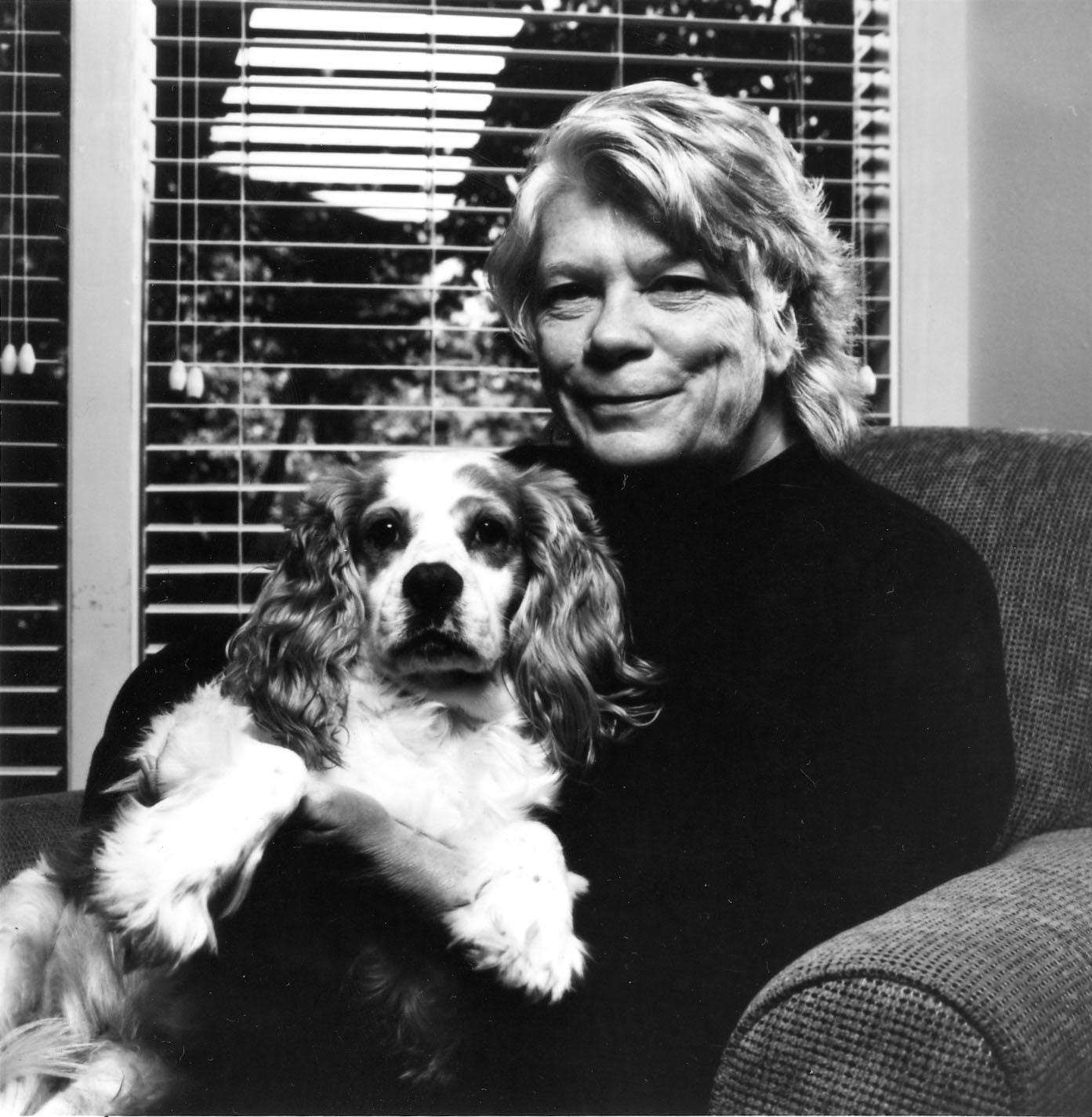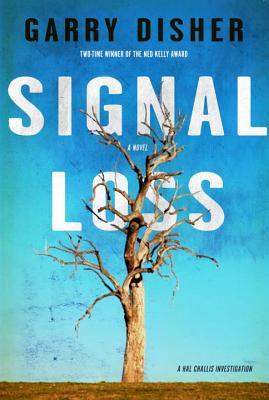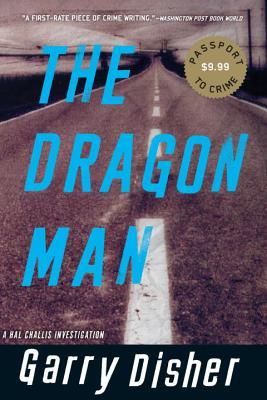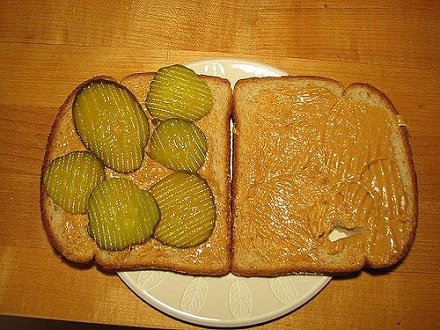A new short storycollection offers a startling look into the heart and mind of a writer we all thought we knew by Kevin Burton Smith
Everybody knows—or thinks they know—Sue Grafton. She is, without question, one of the most popular and acclaimed mystery writers of the last 30 years. Her long-running series featuring Southern California private eye Kinsey Millhone started way back in 1982 with A is for Alibi, and was soon followed by B is for Burglar, C is for Corpse, D is for Deadbeat, and so on.
By now, every Kinsey novel jumps immediately onto the bestsellers’ list upon its release, and is swiftly translated and published around the world. W is for Whatever-She-Decides- To-Call-It is tentatively scheduled for publication later this year, and Z is for Zero (we know the title of that one) lies in wait just down road, the final curtain on what will unquestionably be considered a major series in American detective fiction.
But at a time when everybody’s expecting a mad dash for the finish line, Grafton’s made a curious detour, revisiting Kinsey’s past and, more surprisingly, her own.
Kinsey and Me, now in bookstores, is like nothing Grafton has done before. It’s very much part of the Kinsey series, collecting all nine of the previously published Kinsey short stories that Grafton wrote from 1986 through 1992. That’s the “Kinsey” part of the book.
But it’s the second half, the “... and Me” section, that will be drawing most of the attention. It features 13 loosely connected vignettes focusing on the trials and tribulations of Kit Blue, a fictionalized, younger version of Grafton herself. It deals with her troubled childhood and early years, and was written by Grafton in the decade following her mother’s death, in which the author struggled with all “that rage, that pain. All the scalding tears I wept, both during her life and afterward.”
* * * * *
It’s not like Sue Grafton invented the female private eye with the publication of A is for Alibi in 1982. Even within the modern era of women gumshoes written by women, Grafton’s 30-something private eye Kinsey Millhone has been in the good company of other such pivotal gumshoes as Marcia Muller’s Sharon McCone, Sara Paretsky’s V.I. Warshawski, Liza Cody’s Anna Lee, Maxine O’Callaghan’s Delilah West, and P.D. James’ Cordelia Grey, among others.
What sets Grafton apart is a combination of her widespread appeal (she’s one of the most popular writers currently mining the PI vein), her longevity (30 years and counting) and the almost subversive way she’s slipped her private eye hero into our collective consciousness. Sure, there are more precedent-setting figures, more politically charged ones, louder ones, and hipper ones (Grafton has steadfastly set all the novels in the 1980s, boasting that Kinsey does her sleuthing “the old-fashioned way, without Internet or cellphone”). There may even be a better-selling one or two. But no female private eye (and few contemporary male ones) have appealed to such a wide spectrum of readers, both male and female.
And Grafton has done more than merely ship units. She’s not just successful at what she does—she’s damn good at it. She has received lifetime achievement awards from the Mystery Writers of America, the British Crime Writers’ Association and the Private Eye Writers of America. She also landed, perhaps most fittingly, the Ross Macdonald Literary Award in 2004. They don’t just give those things away willy nilly.
In sharp, clear prose Grafton has presented a frank and honest portrait of a young investigator, flawed, recognizably human, who has nonetheless approached her cases with a steely professionalism that Dashiell Hammett’s Continental Op himself would appreciate.
Critics and readers have praised her shrewd eye for the telling detail, well-integrated research (no info dumps here), deft characterization and solid, inventive plotting. But it’s Grafton’s tough, clear-eyed rendering of the human heart, in all its warped, broken and flawed glory, that really brings her novels alive. Not since Lew Archer, the creation of her idol Ross Macdonald, has a fictional private eye so effectively wormed into the dark, twisted wreckage of American families gone awry. The wary survivors of broken homes and shattered families, addicts, alcoholics, lonely widowers, frightened girlfriends, the dispossessed and the obsessed—through Kinsey’s eyes we see them all with a taut and refreshing emotional clarity, a rough humor and a hard-won empathy. Like Archer, with whom Kinsey shares the stomping ground of Santa Theresa (a thinly fictionalized Santa Barbara, the Southern California beach town where Grafton now lives, as did Macdonald), the turf is not so much the mean streets Raymond Chandler dreamed of, but the mean and frequently dysfunctional homes that line those streets. And the sad acknowledgement that everyone, it seems, has their reasons.
* * * * *
In the introduction to the first half of Kinsey and Me, Grafton acknowledges the challenges of writing short crime fiction, but even a quick read shows she’s no mere dabbler. There’s real meat on those small bones, the same tight plotting and emotional wallop that resonates throughout her novels, and several of them were nominated for various mystery awards. “The Parker Shotgun” among others, often pops up in anthologies, and even now, “Long Gone” is, in my mind, one of the most chilling private detective short stories I’ve ever read, an unsettling little yarn that has Kinsey searching for the runaway wife of a young father whose life has been torn apart. There’s even a real change-ofpace lagniappe for long-time fans, the tonguein- cheek product placement tale “The Lying Game,” which Grafton wrote for—of all things—the Land’s End catalog. Presumably, she got a nice coat out of it, perhaps even, as she so casually mentions, a Lands’ End Squall Parka with its Advanced Thermolite Micro Insulation...
That’s the “Kinsey” part of the book.
There follows a brief entr’acte. “An Eye for an I: Justice, Morality, the Nature of the Hard-boiled Investigator, and All That Existential Stuff” is a think-piece which first appeared in The Crown Crime Companion (1995). In it, Grafton confesses she was “raised on a steady diet of mystery and detective fiction,” and credits her father, C.W. Grafton, who wrote a handful of acclaimed mystery novels himself, for introducing her to the genre. She then proceeds to offer some thoughts on how the genre evolved from the “escapism” of the 1940s and 1950s into our modern era where “the PI has been transformed from a projection of our vices to a mirror of our virtues...and has come to represent and reinforce not our excess but our moderation.”
It’s a thoughtful and intriguing essay, and the hint of personal biography sets the scene for the “...and Me” half of Kinsey & Me. And it’s that second part of the book, the stories featuring Kit Blue, that’s gonna spin some heads.
* * * * *
Over the years Grafton has parcelled out intriguing snippets of her past, in much the way she has slowly revealed details of Kinsey’s own complicated family history. The cursory knowledge that Grafton was the daughter of a well-regarded mystery novelist, that she now lives in tony Santa Barbara, or that she maintains a “stately mansion” back home in Louisville, Kentucky, might lead some to assume she’s had it easy, or was somehow to the manor born. Not so.
Her parents were alcoholics. Not that it’s been a closely guarded secret or anything— Grafton herself has alluded previously to the “long, ugly story” that was her childhood, without necessarily making a big deal about it.
“My father was known as the ‘dean of Kentucky municipal bond law,’” she reminisces. “He went to work every day of his life with a fifth of whiskey. My mother, who never weighed more than 98 pounds, drank as well. She would wake up, have a drink and lie down on the couch, so from the age of five on, my older sister and I pretty much raised ourselves.”
She left home and married at 18, had a child, divorced her first husband, remarried, had two more children, divorced again. By then, she’d moved to California, far from her old Kentucky home. She took what jobs she could find: a hospital admissions clerk, a cashier, a medical secretary, a maid.
“Yes, I did that,” she says. “I worked as a domestic servant. Did I put that in the book? Oh, Lord. I was young, I wanted to write, but I was divorced and I had little children, and I’m telling you, you just do what you have to do, use whatever skills you have at your disposal. Mine were a bit limited for a while. But I’ll tell you, you learn a lot about other people cleaning their toilet bowls.”
In a 2005 interview, she revealed to Stuart Kaminsky that her mother had committed suicide. “She had cancer of the throat.... She just wasn’t going to put up with it. She died on my 20th birthday.”
Through it all, Grafton continued to write. And write. And write. Writing was her salvation, she has written, “the means by which I learned to support myself, to face the truth, to take responsibility for my future.”
She wrote several novels and eventually two were published, Keziah Dane in 1967 and The Lolly-Madonna War in 1969. Grafton co-wrote the screenplay for the 1973 feature film adaptation of the latter, starring Rod Steiger, Robert Ryan, and a young Jeff Bridges, and eventually settled into a career in television, writing episodes of Rhoda, Nurse (for which Grafton developed and wrote or cowrote every episode), Seven Brides for Seven Brothers, and others. She eventually moved on to made-for-TV films, including the adaptation— with her third (and final, she says) husband, Steven Humphries—of a couple of Agatha Christie novels, A Caribbean Mystery and Sparkling Cyanide (both 1983).
“I lost a decade working in Hollywood. But I think that was good for me as a writer, to come up slowly. All those things are necessary detours, part of the path you’re on.”
* * * * *
An early version of Kinsey and Me, featuring stories written in the 10 years following her mother’s suicide, appeared in 1991. But if it was an outing of her demons, it was a muted and rather private one. The volume was published by Grafton and her husband, and had a limited run of 300 copies, doled out mostly to friends and family.
But now comes this new, expanded and revised edition, aimed at a much larger audience. It’s a curious book, part collection and part memoir, fictionalized to be sure, with the Kit Blue stories offering the slightly queasy feeling of violating someone’s privacy. At times I feared Grafton would barge in and demand to know what I was doing reading her diary.
But ultimately, it’s a tale of triumph; a spit in the face of victim chic. It’s also jarring and emotionally wrenching, a cry from a wounded heart, told by a survivor. Kinsey would probably understand. Whether her millions of fans will is another question.
* * * * *
“I know those stories are difficult,” Grafton confesses, as we chat by phone on the eve of Kinsey and Me’s release. I’m perched in front of an electric heater while California’s High Desert winds howl outside my cramped little office. Grafton is in sunny Santa Barbara in her own book-lined study (I’ve seen pictures), the sun no doubt streaming through her windows.
She considers herself a Californian, but a slight dusting of her childhood lingers in her voice, along with a measure of what I’d like to think is old-fashioned Southern graciousness (ie, she laughs at my jokes, tells me several times I’m sweet, and peppers her speech with “Oh, Lords!” and “Oh, my heavens!”). She’s generous with her time, and the conversation veers all over, from our likes and dislikes in crime fiction, some surprisingly candid asides about her family background, and even some early reactions to the book.
“One woman was rather upset, accusing me of forcing her to touch on recollections and feelings she hadn’t dealt with in years, and I thought, well, apparently, Honey, you still have some work to do.
“I think we handle what we need to handle when we’re able to. It doesn’t always pop up at first in a way we can process, but eventually you have to deal with it. And it’s hard work.”
That’s the other thing you notice. Balancing out the gentility and charm is a very strong work ethic. Grafton has little truck with those who choose to wrap themselves in victimhood, and she’s been known to speak with a bluntness that sometimes rankles, in much the same way the late Robert Parker’s did.
She has little sympathy for those who don’t do the work or try to dodge personal responsibility. Just last August she raised the hackles of a whole generation of would-be writers by urging them to stop worrying about publication and “master their craft,” and then had the temerity to suggest that self-publishing was “as good as admitting you’re too lazy to do the hard work.” The fallout was as amusing as it was predictable: a slew of self-publishing disciples and mostly unknown writers slammed her in often lessthan- coherent outrage.
Bracing myself, I asked her about the differences between her and Kinsey.
“Well, Kinsey and my adult self are very connected in a curious way. She, for instance, has been married and divorced twice, as I have, but I’m married for a third time and she may never marry again. And of course, I had kids and Kinsey isn’t even really fond of children. But I do notice that her parents die (conveniently) when she’s five, and I remember thinking, oh, Lord, that has a little ring of truth to it, doesn’t it? Yes, that may mean something. But, honestly, that was all unconscious. I never intended to set up this parallel—that just showed up later, and I went ‘Oh my goodness.’”
I suggested that because Kinsey was a person first, and a woman second, it might have helped ease her across the gender gap, picking up male readers where many other female private eyes have not.
She answered with the equivalent of a verbal shrug. “I just didn’t know any better. Honestly, it did not occur to me at the time that there really weren’t many woman private eyes. Although Kinsey’s often referred to as a role model, which just, well, oh, it makes me cringe.”
“The whole thing with Kinsey is that she’s flawed and inconsistent and she likes to lie and she’s a bit of a flake. But she works it out. She’s very down-to-earth in her own way.” The follow-up question, then, seems obvious. How much of Kit Blue, then, is you?”
“Almost everything. The biographical details are all correct. Very little was invented. Kit is...the part of me I think I’ve recovered from. Oh, in one story, I deleted a character or two for the sake of simplicity, and when we decided to do this as a real book, I took out two stories that just seemed too harsh, and added five.”
She’s quick to explain. “I have three adult children, you know, and I have four granddaughters, and at this remove I thought, ‘You know, Mama, let’s just be a little discreet here.’ But everything else I just reported the way it was.”
Which in itself is staggering, because Kit’s story is truly heartbreaking, The same skills that have made her mystery novels so popular are turned into a report from the front lines of a never-ending domestic battle. The stories trace the arc of a family falling apart, through their mother’s occasional stabs at sobriety, Kit’s own rebellious coming of age and struggles, her mother’s bitter battle with cancer and eventual death, as well as the fallout.
“It was painful at the time,” Grafton allows, referring to the years following her mother’s death, her father’s eventual remarriage, and the razing of the family home in Louisville, one of the most powerful scenes in those stories. “We’d all been in denial for so long, and when my mother passed, I felt this need to, well.... At that time, I thought let’s own it, let’s just acknowledge exactly what went on.
“But I never wrote those stories for... They were all for me. I had no intention of ever publishing them. I put them away.
“I would read them occasionally and think, yes, that was exactly right, that is exactly how it was. I felt there was a kind of timelessness from my perspective as the writer and as the person who suffered through all that—that carried some weight with me. If I had thought, ‘Oh, this is miserable dreck,’ I would never have published them. So it will be interesting— an invasion of privacy I did to myself. But I think there’s a certain power in just finally putting it out.
“I am curious about my sister’s reaction. She has never wanted to deal with this, and I have a feeling she just won’t do it. In fact, sometimes I think my sister and I had different parents. I remember times when I felt like, ‘Are you kidding? Don’t you remember when she did this, or that happened?’
“So I think she’ll read them but I’m not sure how she’ll react or if I’ll get feedback. She was the oldest, so she was on the front lines and she took the brunt of it and I just did my little dog-and-pony show, as I put it. I was little Mary Sunshine and that’s how I avoided center stage. She was the one who clashed with my mother. We all handle these things differently...
“For me, it was writing. I was just fortunate my father had written mystery fiction and that it was the love of my reading life. We had a drugstore spinner rack in the back of the house and we just read all the time. That was lovely. At the dinner table my parents would talk about books and literature. We were all wellread. That was how we related to each other.
“My father admired mystery fiction so much. I was saturated with it from an early age. It gets in your blood, that’s for sure.
“I don’t know if this was a conscious decision on their part or by default, but my parents were very permissive. My sister and I had a lot of freedom, probably far more than we should have—we could read whatever we wanted. Mickey Spillane, Chandler, James M. Cain.Those are the books I grew up on and they were dark. I loved Double Indemnity. That was great stuff.
“I think that crime in real life is much more absurd. Crime in fiction is more grounded in human life, in history and narrative. Read your local paper. Kids are killed for just the most ridiculous reasons...or for no reason at all. In fiction, the job of the writer is to put that into a context that makes sense.”
This is something that I’ve felt myself for a long, long time, and it’s gratifying to hear her touch on the same point.
I just have to ask: “Because real life doesn’t make sense but fiction does?”
“Exactly!” she laughs. “Especially mystery fiction.”
“Every time I finish a book with Kinsey, I think ‘That’s it. I am absolutely played out— nothing left to say and no place left to go.’ And then, inevitably, I come to the conclusion that no, maybe I have one more story in me.
“I am committed to getting to Z is for Zero, although I’m not sure how I’m going to get there. But I want to assure people that Kinsey will survive. After all, Kinsey isme, and of course she’ll live forever.
“But the past is a package deal,” she concedes, echoing what’s she’s written in Kinsey and Me. “I wish life could be edited as deftly as prose...but I’ve found out that any attempt to trim out the dark matter takes away some of the good that was also buried in the muck. You can’t tell just part of the truth.”
Kevin Burton Smith is the founder and editor of The Thrilling Detective Web Site. The ABCs of Sue KINSEY MILLHONE NOVELS
“A” Is for Alibi (1982)
“B” Is for Burglar (1985)
“C” Is for Corpse (1986)
“D” Is for Deadbeat (1987)
“E” Is for Evidence (1988)
“F” Is for Fugitive (1989)
“G” Is for Gumshoe (1990)
“H” Is for Homicide (1991)
“I” Is for Innocent (1992)
“J” Is for Judgment (1993)
“K” Is for Killer (1994)
“L” Is for Lawless (1995)
“M” Is for Malice (1996)
“N” Is for Noose (1998)
“O” Is for Outlaw (1999)
“P” Is for Peril (2001)
“Q” Is for Quarry (2002)
“R” Is for Ricochet (2004)
“S” Is for Silence (2005)
“T” Is for Trespass (2007)
“U” Is for Undertow (2009)
“V” Is for Vengeance (2011)
"W" is for Wasted (2013)
"X" (2015)
"Y" is for Yesterday (2017)
COLLECTIONS
Kinsey and Me: Stories (2012)
OTHER
Kezia Dane (1967)
The Lolly-Madonna War (1969)
WEBSITE
www.suegrafton.com ...




 In his most recent novel, Signal Loss, part of the Hal Challis series, a methamphetamine epidemic is sweeping across Australia’s Mornington Peninsula, which Disher describes as “a comma of land hooking into the sea southeast of Melbourne.” It’s a mostly rural setting within the shadow of its big-city neighbor, and a place where poverty and wealth exist side-by-side. It’s also a tourist destination known for its beaches, wineries, and coastal towns; a landscape that is sparsely populated and beautiful.
In his most recent novel, Signal Loss, part of the Hal Challis series, a methamphetamine epidemic is sweeping across Australia’s Mornington Peninsula, which Disher describes as “a comma of land hooking into the sea southeast of Melbourne.” It’s a mostly rural setting within the shadow of its big-city neighbor, and a place where poverty and wealth exist side-by-side. It’s also a tourist destination known for its beaches, wineries, and coastal towns; a landscape that is sparsely populated and beautiful. Disher’s most well-known creation, however, isn’t Challis or Destry, but the Melbourne criminal Wyatt, the protagonist of Disher’s first six published crime novels, beginning with Kickback in 1991. Wyatt is stark and brutal, without humor, and very much a villain. Challis, in contrast, is a flawed, unassuming police inspector who skillfully fills the role of literary hero. Disher said, “After six Wyatts in quick succession, each one following a set pattern—Wyatt identifies a target to rob, Wyatt is betrayed, Wyatt wins in the end—it was stimulating to think and write in a different way with the police procedurals, which—although easy to read—are more complex in structure, with several strands being followed.” He continued, “I could become stale with the Challis and Destry novels, too, but have avoided that by letting the characters grow and change over the series.”
Disher’s most well-known creation, however, isn’t Challis or Destry, but the Melbourne criminal Wyatt, the protagonist of Disher’s first six published crime novels, beginning with Kickback in 1991. Wyatt is stark and brutal, without humor, and very much a villain. Challis, in contrast, is a flawed, unassuming police inspector who skillfully fills the role of literary hero. Disher said, “After six Wyatts in quick succession, each one following a set pattern—Wyatt identifies a target to rob, Wyatt is betrayed, Wyatt wins in the end—it was stimulating to think and write in a different way with the police procedurals, which—although easy to read—are more complex in structure, with several strands being followed.” He continued, “I could become stale with the Challis and Destry novels, too, but have avoided that by letting the characters grow and change over the series.” This relationship to landscape may come from Disher’s childhood spent on a small wheat and wool farm in the mid-north of South Australia, where the natural world would have been a constant and very visible companion. And though he has studied in the United States, as well as Melbourne, Australia, where he completed a Masters in Australian History at Monash University, and has been writer-in-residence at the University of Northumbria in the United Kingdom, the State Library of Queensland, and the Tasmanian Writers’ Union, Disher prefers to work and live in rural Australia, where he scratches out in longhand one new novel a year. “[I write with] blue pen on the backs of old manuscript drafts,” admitted Disher, because “the magic would leak away [with] black pen.” Disher writes in the mornings six days a week from about 8 am to 12:30 pm. “Some mornings I’ll write a paragraph, other mornings a few pages.” And though Disher is adept across multiple genres, he said he enjoys writing crime fiction for “the sense of teasing the reader through the use of delaying tactics, sudden reversals, a sense of buried secrets, doubtful or partial outcomes and carefully placed turning points.” He also tends to play against reader expectations and stereotypes.
This relationship to landscape may come from Disher’s childhood spent on a small wheat and wool farm in the mid-north of South Australia, where the natural world would have been a constant and very visible companion. And though he has studied in the United States, as well as Melbourne, Australia, where he completed a Masters in Australian History at Monash University, and has been writer-in-residence at the University of Northumbria in the United Kingdom, the State Library of Queensland, and the Tasmanian Writers’ Union, Disher prefers to work and live in rural Australia, where he scratches out in longhand one new novel a year. “[I write with] blue pen on the backs of old manuscript drafts,” admitted Disher, because “the magic would leak away [with] black pen.” Disher writes in the mornings six days a week from about 8 am to 12:30 pm. “Some mornings I’ll write a paragraph, other mornings a few pages.” And though Disher is adept across multiple genres, he said he enjoys writing crime fiction for “the sense of teasing the reader through the use of delaying tactics, sudden reversals, a sense of buried secrets, doubtful or partial outcomes and carefully placed turning points.” He also tends to play against reader expectations and stereotypes.
 In announcing Grafton’s passing, her daughter posted this on Sue Grafton Facebook page:
In announcing Grafton’s passing, her daughter posted this on Sue Grafton Facebook page: Here was Kinsey, who could easily have been a friend I hung out with. Like me, she was independent, unmarried, no children, supporting herself. I may have had more clothes than she, and more than just that one black dress. But I had been known to, at times, trim my bangs with manicure scissors. The big differences were that I had a dog, owned my own home, had a few plants, and had a close relationship with my parents.
Here was Kinsey, who could easily have been a friend I hung out with. Like me, she was independent, unmarried, no children, supporting herself. I may have had more clothes than she, and more than just that one black dress. But I had been known to, at times, trim my bangs with manicure scissors. The big differences were that I had a dog, owned my own home, had a few plants, and had a close relationship with my parents.  The Kinsey novels were generally released two years apart. In an interview with the Louisville Courier-Journal, Humphrey said his late wife had not yet started writing her last book in the series.
The Kinsey novels were generally released two years apart. In an interview with the Louisville Courier-Journal, Humphrey said his late wife had not yet started writing her last book in the series.  When Major Crimes first aired on TNT, I was not a huge fan. I was very attached to The Closer, which starred Kyra Sedgwick as Brenda Leigh Johnson in the title role.
When Major Crimes first aired on TNT, I was not a huge fan. I was very attached to The Closer, which starred Kyra Sedgwick as Brenda Leigh Johnson in the title role. Mystery Writers of America has its own way of celebrating the birth of Edgar Allan Poe—announcing the nominations for the Edgar Allan Poe Awards. January 19 is the 209th anniversary of Poe’s birthday and, true to form, here are the award nominees, honoring the best in mystery fiction, nonfiction, and television published or produced in 2017.
Mystery Writers of America has its own way of celebrating the birth of Edgar Allan Poe—announcing the nominations for the Edgar Allan Poe Awards. January 19 is the 209th anniversary of Poe’s birthday and, true to form, here are the award nominees, honoring the best in mystery fiction, nonfiction, and television published or produced in 2017. 


